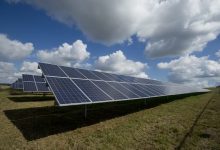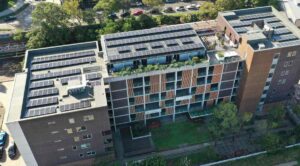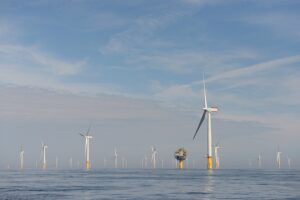Danish renewable energy developer European Energy has granted the green light to build northern Europe’s largest solar farm, a 300MW project set for the municipality of Aabenraa, in wind-dominated Denmark.
The local council in the municipality of Aabenraa, Southern Jutland, Denmark, voted in “a massive majority” to approve European Energy’s plans to build the 300MW solar farm near Kassø, southwest of Rødekro.
The 1 billion Danish kroner (DKK) ($A219.8 million) project is expected to begin construction in early 2021 and be connected to the grid before the end of the year. Denmark also produces more than 50 per cent of its demand from onshore and offshore wind, and has little large scale solar generation to date.
“Working together to find common ground is absolutely key to make a project of this size likely to succeed,” said Knud Erik Andersen, CEO at European Energy.
“Throughout the planning process we have had a very constructive dialogue with the municipality, and we have also seen a very constructive approach from the local citizens that will be the future neighbours of the solar farm.”
“Many things are being said about climate action but following the approval of our strategy for sustainable development we can act in a more powerful way,” said Thomas Andresen, mayor of the municipality of Aabenraa.
“We would like to take on our local co-responsibility in facing environmental degradation that we all are experiencing.”
Denmark has already been making significant headway in moving towards its goal of reducing CO2 emissions by 70% by 2030. Earlier this year, the country announced plans to develop two massive energy islands which will be powered by offshore wind and located in the North Sea and the Baltic Sea.
Both energy islands will start out life with planned capacity of 2GW worth of offshore wind, but a planned artificial island in the North Sea will have room to expand to at least 10GW.
“Denmark must be a green pioneer country, which is why we hold on to the high climate ambitions – even if we are in the midst of an historic crisis,” said Danish climate minister Dan Jørgensen.
“With the establishment of the world’s first two energy islands, we embark on a whole new era in the Danish wind adventure. We are massively increasing the amount of sea wind, and at the same time we will be able to use the green power in the tanks of trucks, cargo ships and aircraft. We present a package that delivers both CO2 reductions in the short term and paves the way for future climate neutral Denmark.”
And just last month, Denmark’s under-construction 605MW Kriegers Flak offshore wind farm was connected with two completed German offshore wind farms located in the Baltic Sea – the 48.3MW Baltic 1 and the 288MW Baltic 2 – via a hybrid subsea interconnector that allows for power to be brought onshore to Denmark or Germany and for cross-border energy trading.










